20 photos show what life was like in small towns in the US 100 years ago
Zoë Ettinger

- Small towns in the United States have mixed histories. While some small towns have grown over the past century, others have become ghost towns.
- Up until the 1930s, horse-drawn carriages and automobiles could still be seen on the same streets.
- Schools and banks in some small towns were just a tiny, single building.
Main Street in your town likely looked quite different a century ago. While some small towns have grown in the past 100 years, others were abandoned, particularly after mining prospects dried up.
The streets were likely shared by new automobiles and traditional horse-drawn carriages, which were present up until the 1930s.
In some villages and small towns, like Normal, Nebraska, the bank was a building smaller than a house. In Hugo, Oregon, the high school was the size of a mid-sized church.
Take a look at what small towns looked like 100 years ago.
Oatman, Arizona, started as a mining town after gold was found nearby in the early 1900s. Townspeople and old cars are seen in the town below in 1922.
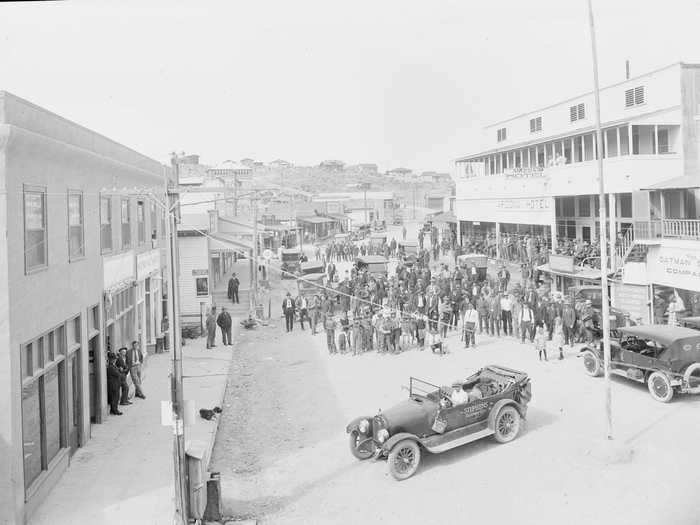
Between the early 1900s and the 1940s, Oatman and nearby Gold Road were Arizona's biggest gold producers, and the town used to be a bustling center with over 10,000 inhabitants.
During the 2010 census, it had a population of just 135 people.
According to Legends of America, "Though Oatman is only a shadow of its former self, it is well worth a visit to this lively 'ghost town' that provides, not only a number of historic buildings and photograph opportunities, but the sights of burros walking the streets, as well as costumed gunfighters, and 1890s style ladies strolling."
The main street in Manning, Iowa, was a dirt road until it was paved in 1915, according to Manning Community.
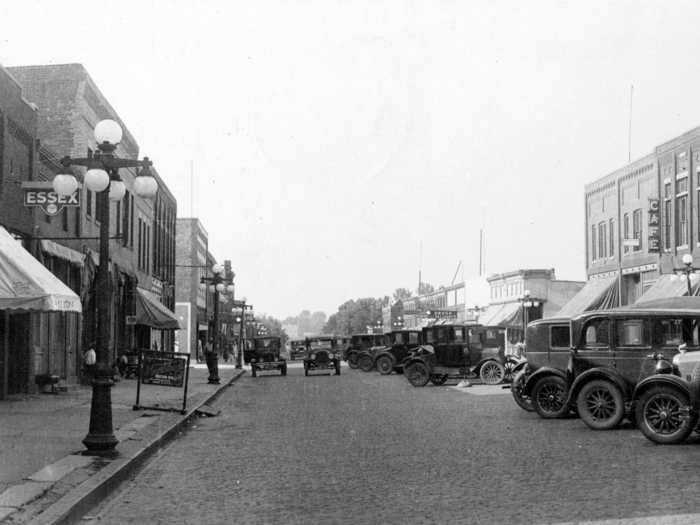
It was founded in 1881 and was named for O.H. Manning, a politician.
In Eastman, Wisconsin, in 1920, the town's power plant was a small building that looked like it could be someone's home.
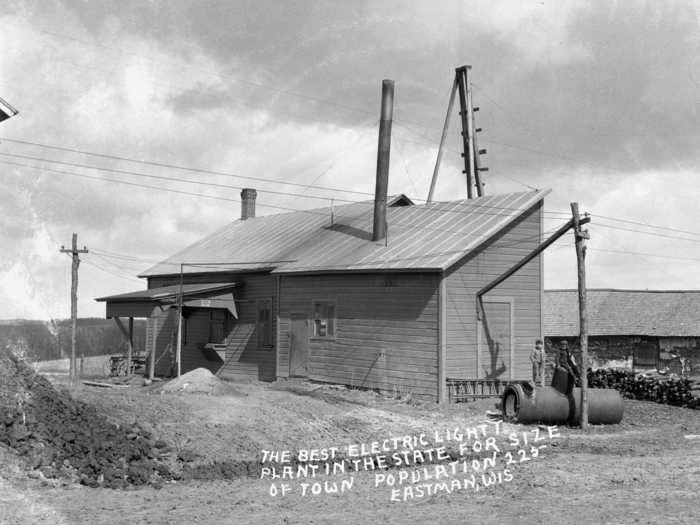
Eastman was established in 1855 and was named for Ben C. Eastman, a member of Congress from the district.
The state bank in Normal, Nebraska, is pictured in the early 1900s.
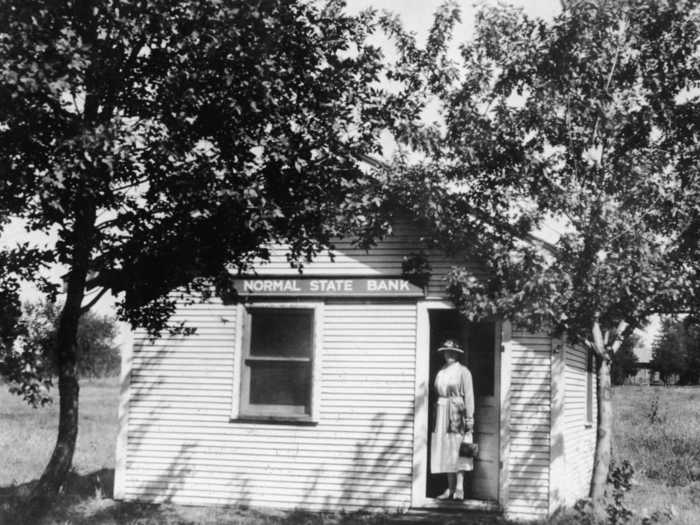
The town was annexed in 1919 to become a part of Lincoln.
In the shot below from 1927, the entire town of Hermosa, South Dakota — 84 people at the time — gathered to meet President Coolidge.
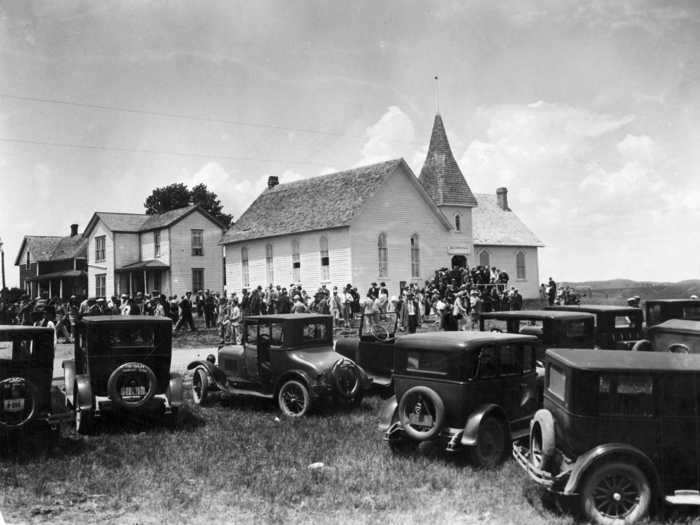
According to Rapid City Journal, "In 1927, Calvin Coolidge didn't just visit South Dakota — he lived here. He spent the summer in the Black Hills, a 'working vacation' meant to give him a respite from Washington, DC, and win over the 'Farm Bloc' with whom he had been sparring over agriculture policy."
A town baseball game can be seen in this image of Boothbay Harbor, Maine, in 1910.
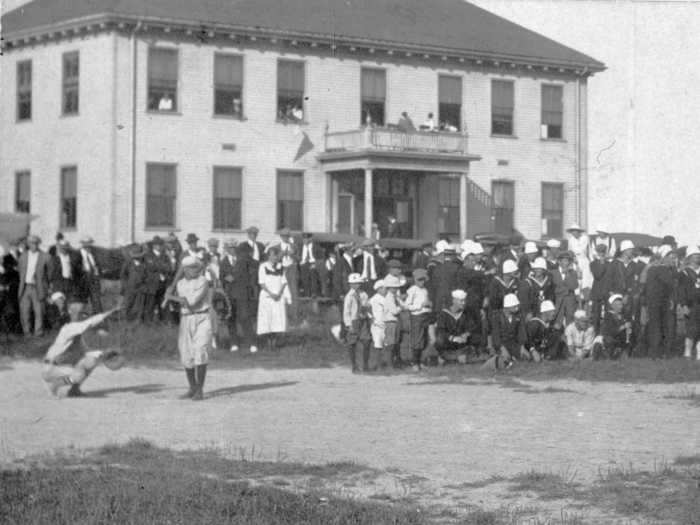
According to Britannica, the town of Boothbay Harbor was incorporated in 1889 and became a trading and shipbuilding center.
Pictured in Cordell, Oklahoma, in 1920, two people pose by a sign that discourages speeding.
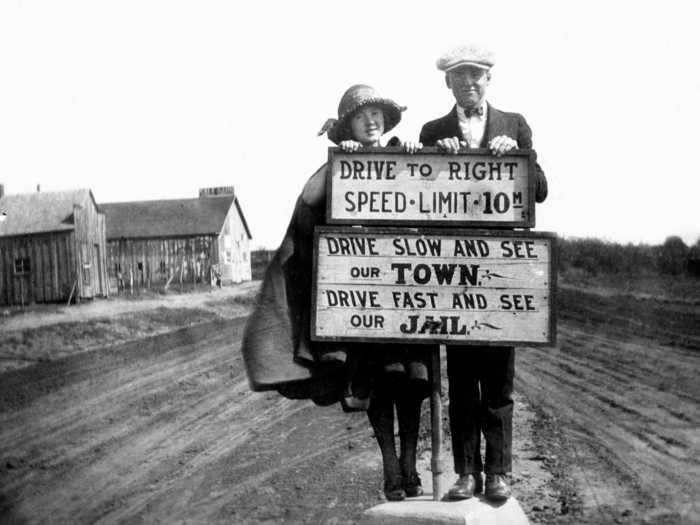
The town was established on land taken from the Cheyenne and Arapaho people. According to the Oklahoma Historical Society, at the end of the 19th century, a general merchandise store with a post office was established nearby. The name of the town honors a postal employee, Wayne W. Cordell.
Manhattan, Nevada, was a busy mining town in the early 1900s. It attracted settlers after gold was found nearby.
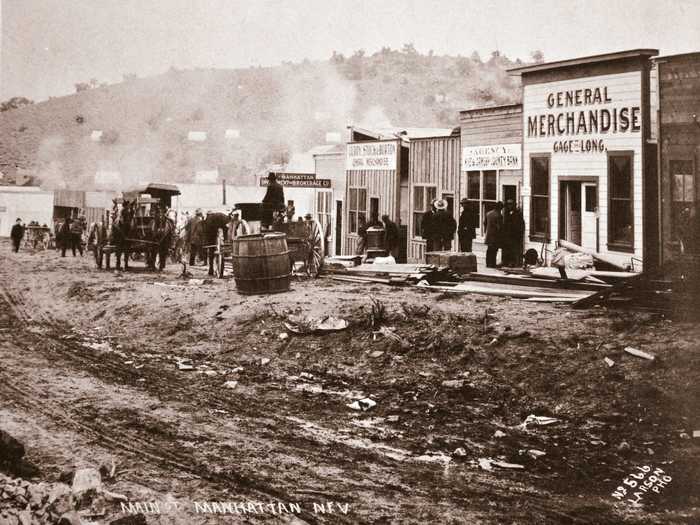
According to Travel Nevada, in 1905, a prospector found gold, and within a year, its population had reached 4,000.
Bannack, Montana, pictured below in 1920, also began as a mining town after gold was discovered in nearby Grasshopper Creek.
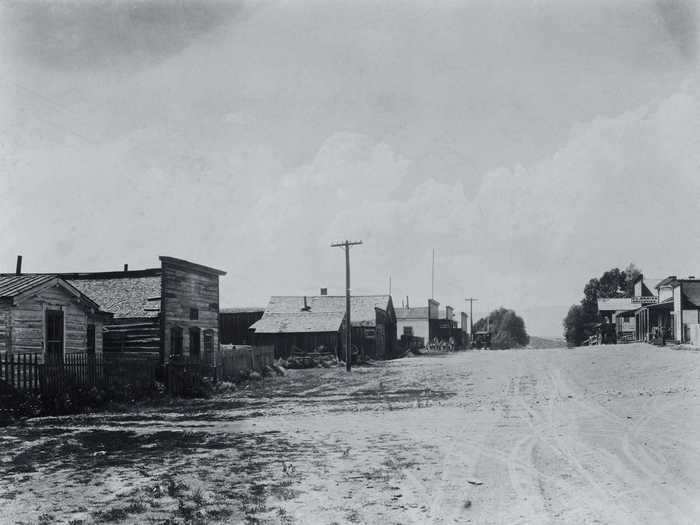
Though the town enjoyed decades of prosperity for the resources provided by Grasshopper Creek, by the 1930s, few residents remained.
"By the 1940s there would be so few students that the school would have to close and Bannack became a ghost town," according to Legends of America.
Bonners Ferry, Idaho, pictured below in 1926, was another bustling mining community.
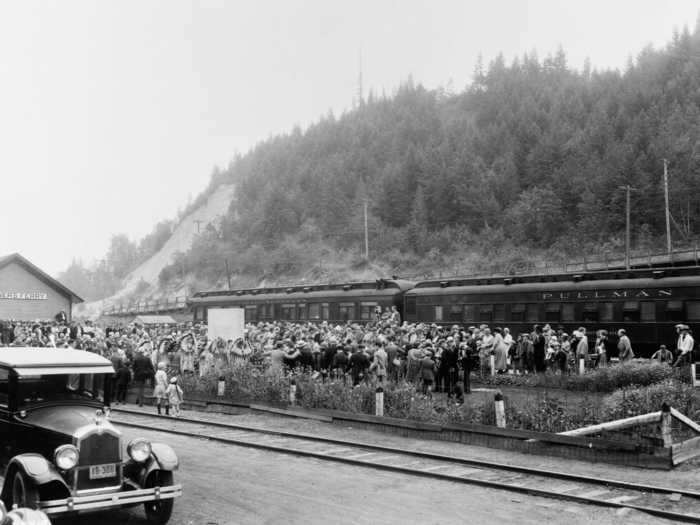
Gold was discovered nearby in the mid-1800s. According to the town's website, "Back in the year 1863, thousands of prospectors flooded from the West on route to the North, over the course now know as the Wildhorse Trail. This sudden movement had been inspired by the discovery of large amounts of gold in the East Kootenais of British Columbia. In 1864 a man by the name of Edwin Bonner, as an enterprising merchant, constructed the ferry where the trail crossed the broad Kootenai River."
Dayton, Tennessee, is pictured below in 1925, the year the town became famous for the Scopes Trial.
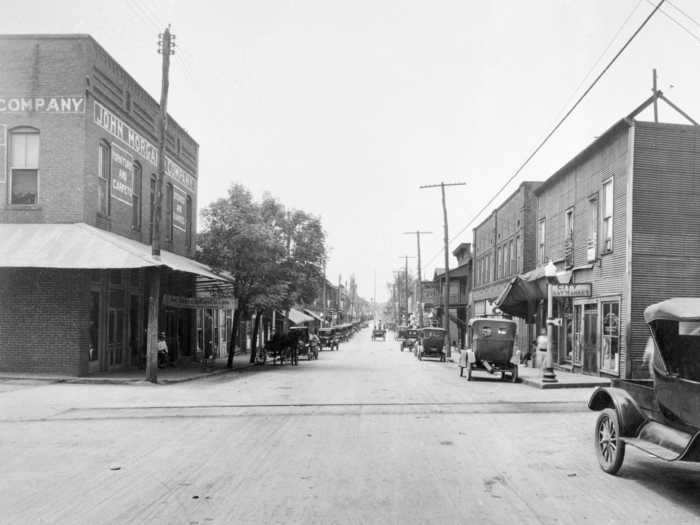
The Scopes Trial was made famous when a Dayton high school science teacher, John T. Scopes, was tried and found guilty for teaching Charles Darwin's theory of evolution.
Hugo High School, pictured below in 1926, was a school in Hugo, Oregon, from 1892 to 1967.
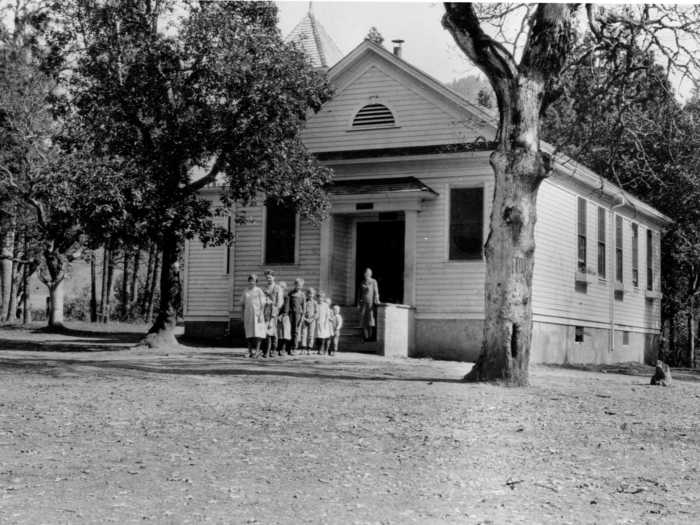
According to Hugo School's Facebook page, former students recently hosted a Hugo School reunion.
Fleischmanns, New York, pictured below in 1925, was established in 1913 and became a vacation town for those looking to escape the New York City heat.
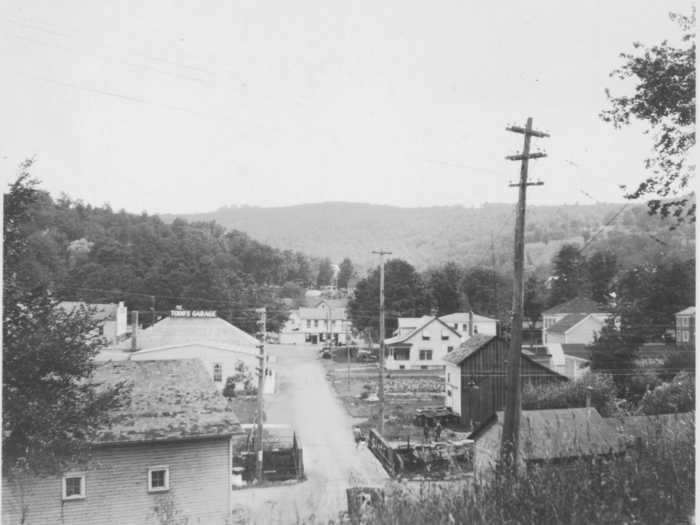
Farmers discovered they could make money from people leaving the city, and hotels and guest houses popped up throughout the town, according to Fleischmannsny.com.
Provincetown, Massachusetts, was founded in 1727, and began as a fishing and whaling community. The town's art museum is pictured below in 1921.
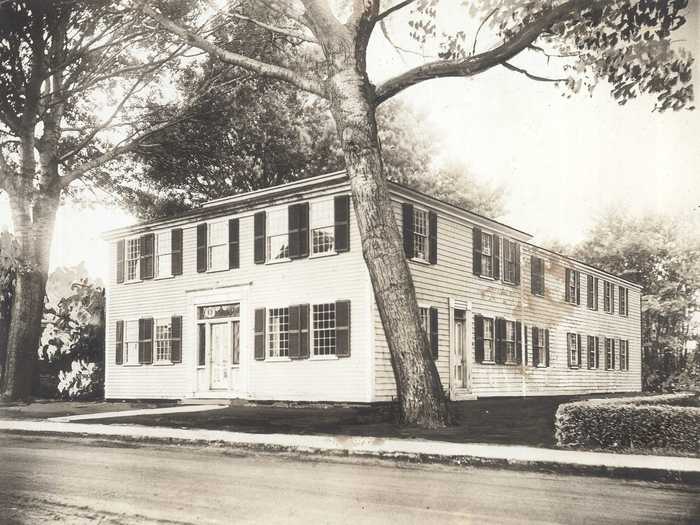
According to I Am Provincetown, in 1914, the Provincetown Art Association and Museum was founded by prominent artists Charles Hawthorne, Oscar Gieberich, William Halsall, Gerrit Beneker, E. Ambrose Webster. They worked with local business people to create a local art collection and educate the public in the arts.
Lumber operations are pictured in Crossett, Arkansas, in the 1920s.
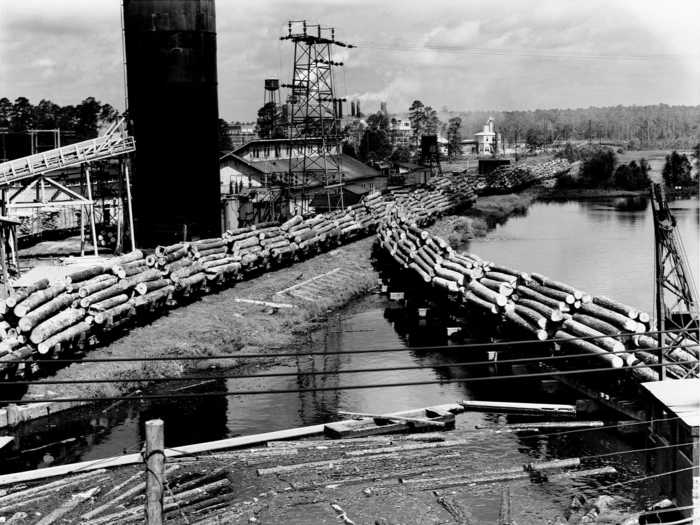
The town was named after Edward S. Crossett, a lumber entrepreneur.
Stillwater, Minnesota, pictured below in 1926, was incorporated in 1854 and also began as a lumbering town.
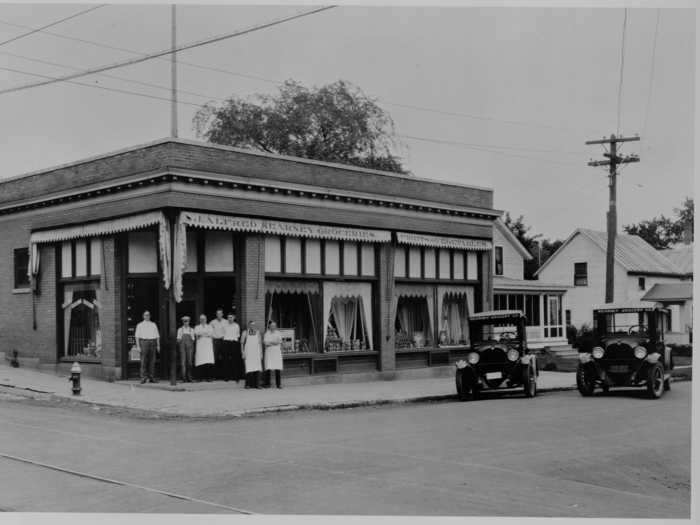
According to Washington County Historical Society, "Stillwater had all the ingredients for a lumbering town: river connections to the northern Minnesota and Wisconsin pine lands, still waters for assembling rafts, and water power."
In more recent years, Forbes named it as one of America's prettiest towns.
Holy City, California, was established by a cult leader and white supremacist, William E. Riker, in 1919. The town is pictured below circa 1928.
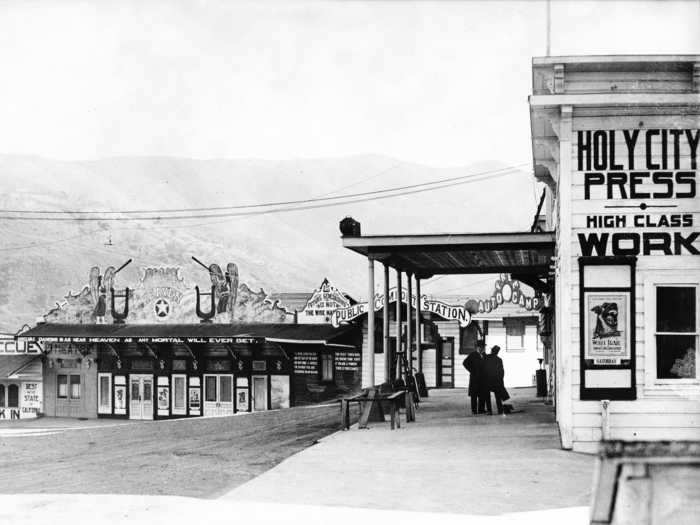
According to the San Francisco Chronicle, "It was called Holy City, but it was not exactly a model of Christian piety. It was, rather, a commune and tourist trap created in the 1920s by a white-supremacist huckster."
The San Francisco Chronicle also reported that Holy City was reduced to "a few derelict buildings" after facing fire, neglect, and a new freeway that cut off the compound from major roads.
According to Mercury News, in 2016, the town was purchased after a decade on the market by Robert and Trish Duggan, billionaire Scientologists.
Taos, New Mexico, seen below between 1920 and 1940, was established as early as 1000 AD by the Taos Pueblo people.
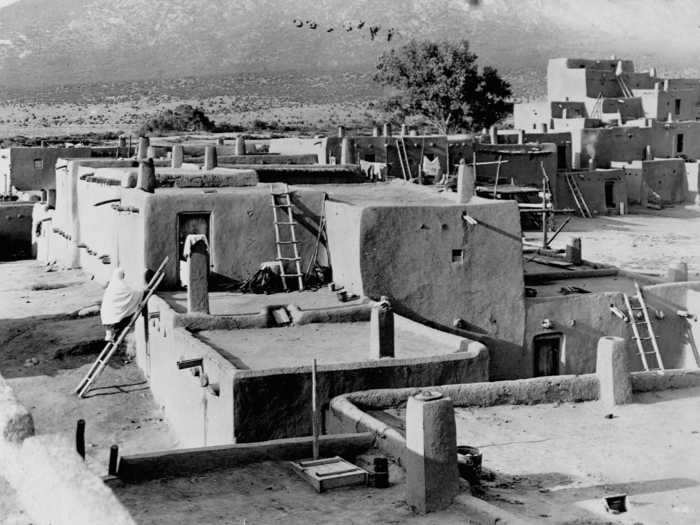
According to Taos.org, 1000 AD is the "estimated time the ancestors of the Taos Pueblo people constructed inhabitable structures (pit houses); created pottery (micaceous pottery); and ceremonial structures (kivas) are created."
Wrangell, Alaska, pictured below in the early to mid-1900s, was discovered by the Tlingit tribe.
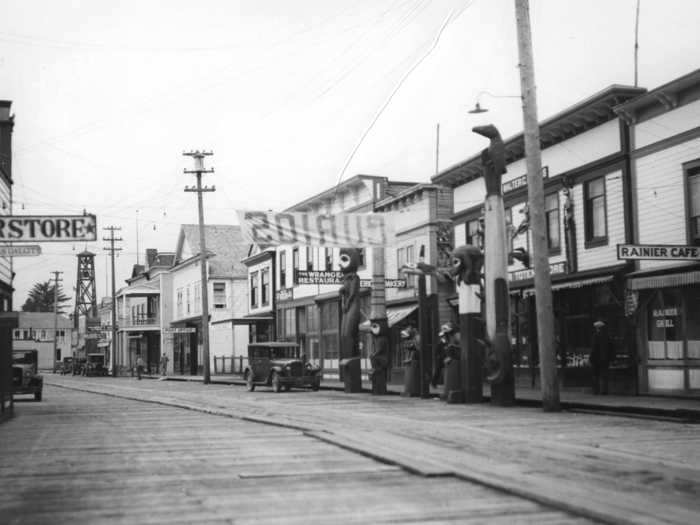
According to Wrangell's website, "It wasn't until the early 1800s that the Native Alaskans were visited by outside forces."
Lt. Dionysius Zarembo, a Russian-American ship commander, landed at present day Wrangell in 1833. It is the only city in Alaska to be ruled by four nations and under three flags — Tlingit, Russia, England, and the United States — according to the town's website.
South Pass City, Wyoming, pictured below in the late 1920s, was founded as a gold mining town. It was later abandoned.
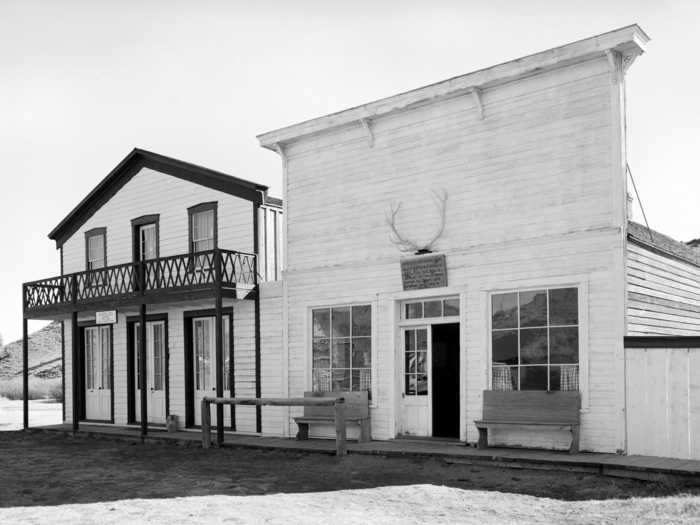
According to Wyoming History, "A century after it was founded, South Pass City was donated to the state of Wyoming, and the site was added to the National Register of Historic Places on February 26, 1970. South Pass City today is operated as a state historic site. The site includes more than 20 original buildings, most of them meticulously restored."
READ MORE ARTICLES ON
Popular Right Now
Popular Keywords
Advertisement